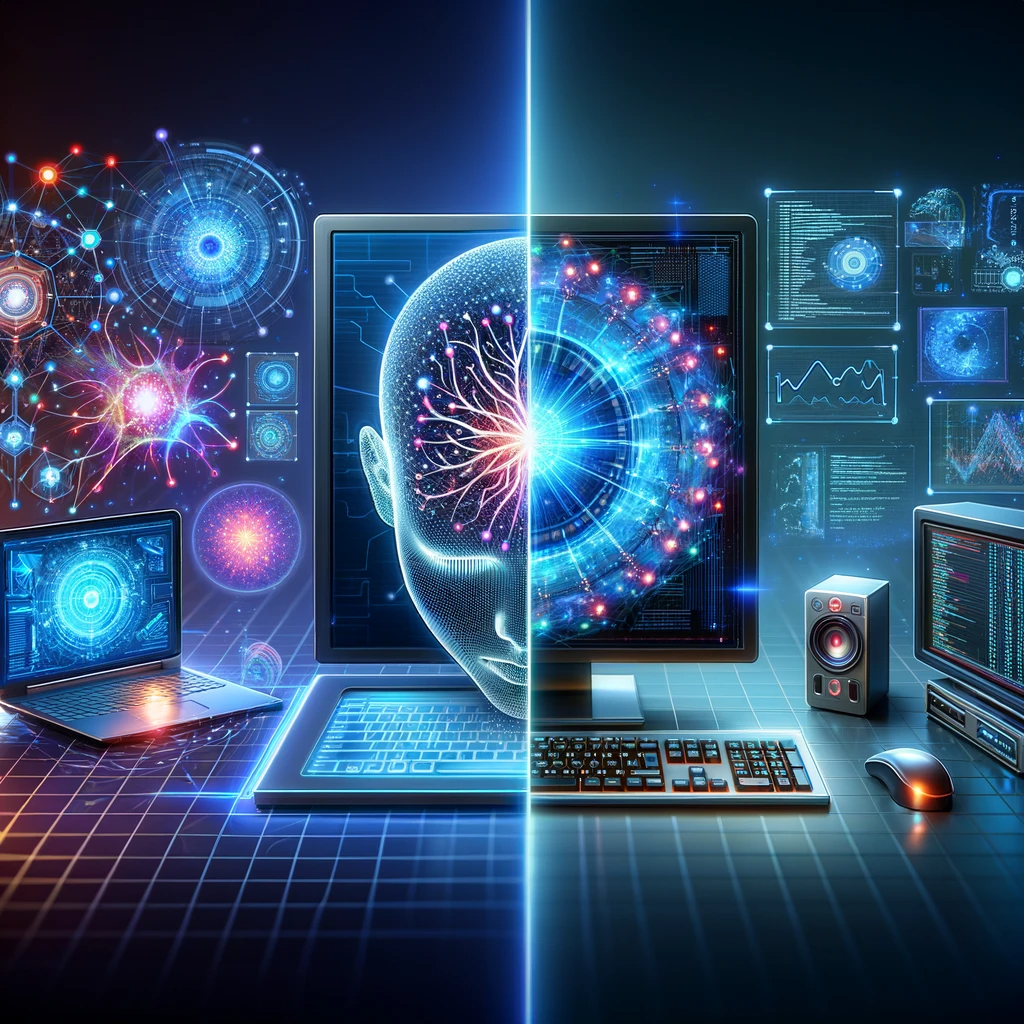Introduction
Artificial Intelligence (AI) has become an integral part of our lives, revolutionizing various industries and improving efficiency in many ways. Traditional AI approaches have been dominant for a long time, but recently, a new form of AI called Generative AI has emerged. In this article, we will explore the differences between Generative AI and Traditional AI, their respective strengths and weaknesses, and the potential applications of Generative AI.
Traditional AI
Traditional AI, also known as rule-based or symbolic AI, relies on predefined rules and algorithms to process information and make decisions. It follows a top-down approach, where human experts define the rules and the AI system applies them to solve problems. This approach has been successful in tasks that have clear rules and well-defined structures, such as chess-playing programs or expert systems in healthcare.
However, traditional AI has limitations when faced with complex and ambiguous situations. It struggles to handle uncertainty and lacks the ability to adapt to new or changing environments. Traditional AI systems require extensive manual programming and are not capable of learning from data on their own.
Generative AI
Generative AI, on the other hand, is a new paradigm that focuses on learning from data to generate new content or make creative decisions. It uses machine learning techniques, such as deep neural networks, to analyze and understand patterns in data. Generative AI follows a bottom-up approach, where the AI system learns from examples and generates new outputs based on that learning.
Generative AI has shown remarkable capabilities in various domains, including image and video generation, music composition, and natural language processing. It can create realistic images, compose original music, and even generate human-like text. This ability to generate new content makes Generative AI particularly useful in creative industries and can also assist in data augmentation for training other AI models.
Strengths and Weaknesses
Traditional AI and Generative AI have different strengths and weaknesses, making them suitable for different types of problems.
Traditional AI excels in tasks that require explicit rules and well-defined structures. It is reliable and predictable, making it suitable for applications where safety and security are crucial. Traditional AI also performs well in domains with limited data availability, as it does not heavily rely on large datasets for training.
Generative AI, on the other hand, is ideal for tasks that involve creativity, such as generating art or music. It can learn from vast amounts of data and produce novel outputs. However, Generative AI can sometimes generate content that is unrealistic or lacks coherence. It also requires large amounts of data for training and can be computationally expensive.
Applications of Generative AI
Generative AI has a wide range of applications across various industries:
- Art and Design: Generative AI can assist artists and designers in creating new and innovative pieces of art, generating unique designs, or even helping in the creative process.
- Entertainment: Generative AI can be used to create realistic characters and environments in video games or generate personalized recommendations for movies, music, or books.
- Healthcare: Generative AI can aid in medical image generation, drug discovery, or even simulate patient data for research purposes.
- Marketing and Advertising: Generative AI can help in generating personalized content for marketing campaigns, creating virtual models for fashion, or even generating product descriptions.
- Language Processing: Generative AI can generate human-like text, assist in language translation, or even create conversational chatbots.
Conclusion
Generative AI and Traditional AI are two distinct approaches to artificial intelligence, each with its own strengths and weaknesses. While Traditional AI relies on predefined rules and algorithms, Generative AI learns from data to generate new content or make creative decisions. Generative AI has shown great promise in various domains and has the potential to revolutionize industries that require creativity and innovation.
As AI continues to evolve, the combination of Traditional AI and Generative AI approaches may lead to even more powerful and intelligent systems, capable of handling complex problems and generating creative solutions.


